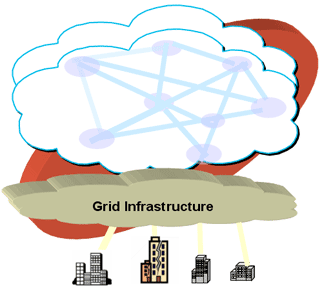As learned from past events, computing in its purest form, has changed hands multiple times. First from near the beginning when mainframes were predicted to be the future of computing. Indeed mainframes and large scale machines were built and used, and in some circumstances are used similarly today. The trend, however, turned from bigger and more expensive, to smaller and more affordable commodity PCs and servers.
Most of our data is stored on local networks with servers that may be clustered and sharing storage. This approach has had time to be developed into stable architecture, and provide decent redundancy when deployed right. A newer emerging technology, cloud computing, has shown up demanding attention and quickly is changing the direction of the technology landscape. Whether it is Google’s unique and scalable Google File System, or Amazon’s robust Amazon S3 cloud storage model, it is clear that cloud computing has arrived with much to be gleaned from.
In dealing with the abstract term, “the cloud”, it is easy to misunderstand what makes up the structure and function. The basic function is what comes from “the cloud”. This is primarily output, however, not only. Input is what makes the cloud tick.
Do not confuse cloud computing with the term data center, as it typically sits on top of the latter. Viewing the cloud as logical rather than a physical, you can see it object describes it better. (Diagram 1 gives a basic visual example)
 (Diagram 1 – credit ICT Watch)
(Diagram 1 – credit ICT Watch)
The proposed benefits of using cloud architecture to build applications on top of, are immense. SmugMug, a successful photography community, saved an estimated $2 $1 Million dollars (edit per this link) in 2007 by using Amazon S3 cloud storage. Organizations and individuals can benefit from mass computing and storage, provided by large companies with stable and strong cloud architectures. On the other hand, companies that desire to build massive, scalable environments, utilizing virtualization and cloud computing will increase their future margin of success greatly.
As new technologies emerge, they often tend to build on the success of previous developments. Cloud computing and storage, benefit from years of development and testing of large scale infrastructure. The most important take away is cloud storage is for everyone and every organization. From big to small, groups to individual, the use of grid infrastructure can be deployed for maximum return and efficiency.
Further Reading: